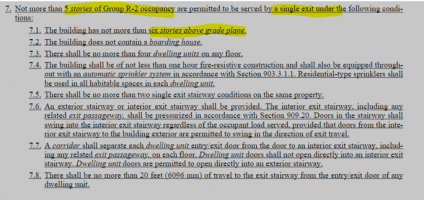jar546
Forum Coordinator
Revitalizing Old Buildings for New Homes: HUD's New Housing Initiative
As housing becomes a growing concern, many communities are finding creative ways to increase availability and affordability. A key strategy? Turning old, underused commercial spaces into residential units. On October 27, 2023, the U.S. Department of Housing and Urban Development (HUD), alongside the Biden-Harris Administration, announced plans to ***** this approach.
HUD is offering a whopping $10 billion in Community Development Block Grant (CDBG) funding to support the transformation of unused commercial properties into homes. This effort is part of the broader trend of "adaptive reuse" – where buildings that have served their original purpose are repurposed for new uses.
Adaptive Reuse: A Trend with Benefits: Adaptive reuse is gaining traction among local officials. It's not just about finding new uses for old buildings; it's about preserving a community's architectural heritage and history while breathing new life into city centers. Plus, these buildings are often already hooked up to essential infrastructure like roads and utilities.
With the rise of online shopping and remote work, many retail spaces and office buildings are no longer needed for their original purposes. They offer a great opportunity for conversion into residential units.
Meeting New Needs: However, turning a former office or retail space into a home isn't straightforward. These buildings need significant interior changes to meet residential needs, like installing kitchens and bathrooms.
The Role of the International Existing Building Code: The International Existing Building Code® (IEBC) comes into play here. It's a code used in 45 states, encouraged by the GSA, and required by the Department of Defense and FEMA. The IEBC guides how to safely and effectively repurpose existing buildings.
The IEBC offers flexibility for these projects. It allows for changes in building use (like turning an office into apartments) without demanding full compliance with new construction codes.
There are three main methods in the IEBC:
As housing becomes a growing concern, many communities are finding creative ways to increase availability and affordability. A key strategy? Turning old, underused commercial spaces into residential units. On October 27, 2023, the U.S. Department of Housing and Urban Development (HUD), alongside the Biden-Harris Administration, announced plans to ***** this approach.
HUD is offering a whopping $10 billion in Community Development Block Grant (CDBG) funding to support the transformation of unused commercial properties into homes. This effort is part of the broader trend of "adaptive reuse" – where buildings that have served their original purpose are repurposed for new uses.
Adaptive Reuse: A Trend with Benefits: Adaptive reuse is gaining traction among local officials. It's not just about finding new uses for old buildings; it's about preserving a community's architectural heritage and history while breathing new life into city centers. Plus, these buildings are often already hooked up to essential infrastructure like roads and utilities.
With the rise of online shopping and remote work, many retail spaces and office buildings are no longer needed for their original purposes. They offer a great opportunity for conversion into residential units.
Meeting New Needs: However, turning a former office or retail space into a home isn't straightforward. These buildings need significant interior changes to meet residential needs, like installing kitchens and bathrooms.
The Role of the International Existing Building Code: The International Existing Building Code® (IEBC) comes into play here. It's a code used in 45 states, encouraged by the GSA, and required by the Department of Defense and FEMA. The IEBC guides how to safely and effectively repurpose existing buildings.
The IEBC offers flexibility for these projects. It allows for changes in building use (like turning an office into apartments) without demanding full compliance with new construction codes.
There are three main methods in the IEBC:
- Prescriptive Method: Offers a clear compliance pathway for safety.
- Work Area Method: Allows varying compliance levels depending on the extent of alterations. More extensive work means closer adherence to the latest codes.
- Performance Method: Uses a scoring system to ensure safety while providing design flexibility. This system evaluates safety features that are best suited for the building's needs and budget.

